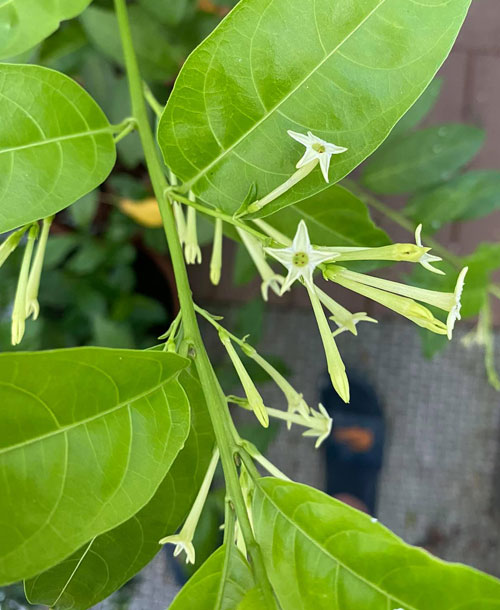FAMILY :: SOLANACEAE
NIGHT BLOOMING JASMINE, NIGHT BLOOMING JESSAMINE, HUELE DE NOCHE, DAMA DE NOCHE: Not a true jasmine (many scented plants are commonly called “jasmine”)
As I write this I have one of these plants in front of me, sitting on top of the computer. It has many clusters of 1-2″ light green/white, five-pointed, star-mouthed trumpets “shouting” at me the sweetest, most intoxicating musk scent I’ve ever smelled in a flower.

A friend who grew up in the Southern USA said it’s dangerous to have one of these shrubs growing outside your bedroom window. He wouldn’t say why; that’s the kind of guy he is. He thinks you should already know, or if you don’t, you should be able to figure it out with a minimum of hints. Grows easily and well in a pot as a house plant. Blooms December through April in northern climates and periodically year-round in warmer climes.
Many sources list this plant as toxic but there is little actual evidence of this toxicity.
Ingestion of C. nocturnum has not been well documented, but there is some reason to believe that caution is in order. All members of the family Solanaceae contain an alkaloid toxin called solanine, though some members of the family are routinely eaten without ill-effect (tomatoes, potatoes, etc). The most commonly reported problems associated with C. nocturnum are respiratory problems from the scent, and feverish symptoms following ingestion. ~ Wikipedia
#cestrumnocturnum #nightbloomingjasmine
RETURN TO MAIN CATALOG